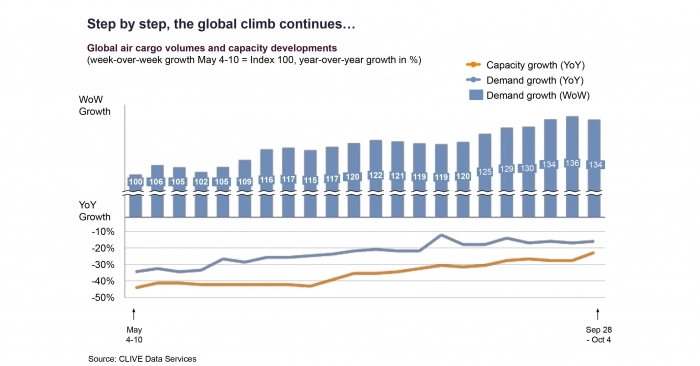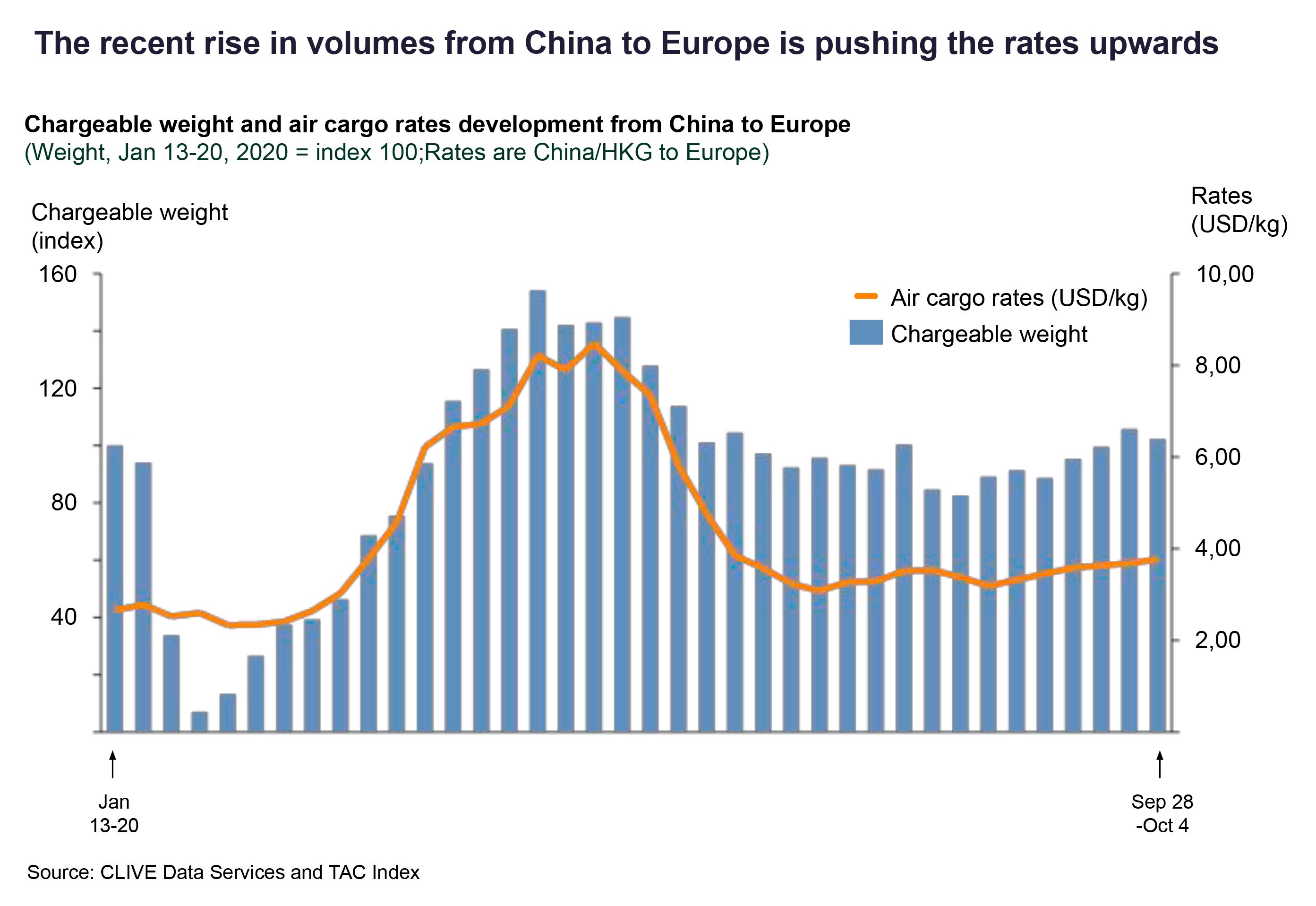CLIVE records highest ever air cargo load factor of 71% in Sep28-Oct4
October 8, 2020: CLIVE Data Services reported the highest-ever global air cargo dynamic load factor, based on both the volume and weight, of 71 percent for the week of Sep 28-Oct 4.

October 8, 2020: CLIVE Data Services reported the highest-ever global air cargo dynamic load factor, based on both the volume and weight, of 71 percent for the week of Sep 28-Oct 4.
The dynamic load factor averaged 70 percent in September, a 2 percent increase vs August 2020 and 8 percent higher year-over-year.
Transatlantic load factor
Latest CLIVE Data Service and TAC Index analyses of the dynamic load factor and airfreight rates on transatlantic routes reported even higher gains. The elevated load factor for westbound volumes rose to 84 percent in September – up 18 points versus September 2019 – while the eastbound dynamic load factor was 67 percent. Corresponding westbound and eastbound airfreight rates rose 170 and 73 percent respectively over the same period of last year.
Demand & supply
Global air cargo’s chargeable weight in September rose 9 percent month-on-month, further narrowing the year-on-year gap to -15 percent, the fifth consecutive month of positive indicators since April 2020’s 37 percent decline in volumes versus the same month of 2019. Global air cargo capacity in September was, on average, 25 percent less than in the same month of last year.
Niall van de Wouw, managing director of CLIVE Data Services, said, “Our latest weekly analyses reveal more positivity than I would have expected based on the global impact of government actions to restrain the spread of Covid-19.”
“While this might be encouraging news for airlines, it means shippers and forwarders are being faced with higher airfreight costs. Uncertainty over how the market will develop alongside very high load factors is a toxic combination for the buyers of airfreight capacity. If this demand persists, and shippers are prepared to pay, we may well see a resurgence in passenger planes being deployed mainly or solely for moving freight.”
Rising freight rates
Constrained capacity in the market at a time of rising demand also led to significant increases in rates, according to TAC Index.
Robert Frei, business development director, TAC Index, said, “It is interesting to see how closely demand/volume and pricing correlate in light of the fact there are a lot fewer BSAs (Block Space Agreements) in place currently. There were steady increases in pricing week-over-week in September, with rates on lanes from China/Hong Kong to the EU in the last week of September 8% higher than in the last week of August.”




